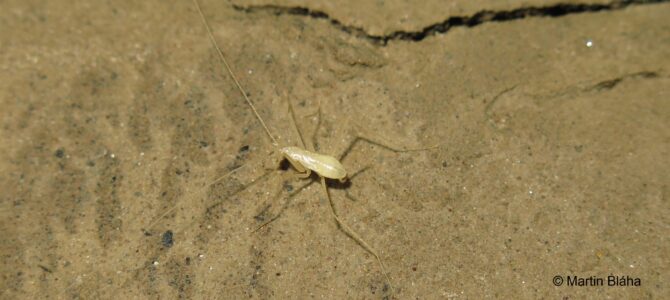by Toby Kovacs (PhD Student)
Australia is famous for its unique flora and fauna, harbouring some of the most unique and highly endemic groups of organisms. When I’m sitting around with my family discussing Australian biodiversity, often the first places we think of are the rainforests, the Great Barrier Reef or the hyper-biodiverse region of South Western Australia. We do unfortunately, often go without mentioning, the plethora of small, white and blind creepy crawlies living directly beneath our feet (quick have a look).
Not many people know that Australia contains an extraordinary level of subterranean (underground) life, living in the shadows. Scientists have long considered cave systems as natural ‘evolutionary laboratories’ due to the apparent simplicity of cave ecosystems. However, surprisingly few studies have contributed to our broad understanding of subterranean evolution. Subterranean fauna are characterised by their troglomorphic (cave adapted) features resulting from the loss of traits no longer required in the absence of light. These include the loss of pigment and eyes, as well as the elongation of antennae, legs and body. Although caves are the most well-known subterranean landscape, because of their accessibility and sick stalactites and stalagmites (Sydneysiders should check out the Jenolan Caves), they are not the only place you can find subterranean fauna (think a little deeper).
Modern subterranean surveys using deep bore holes and subterranean traps have found that inhabitable landscapes extend well beyond the observable caves. In the last decade a diverse array of life has been discovered in previously inaccessible non-cave subterranean landscapes. Australia, in particular the Western Australian Pilbara and Yilgarn regions, contains some of the most biodiverse non-cave subterranean landscapes known, predicted to contain ~3000 species (Halse 2014). Animals inhabit tiny, interconnected air pockets up to 150 m below the surface, where the air remains humid and relatively cool compared to the scorching surface temperatures. Here you can find spiders, cockroaches, beetles, isopods, centipedes, millipedes, pseudoscorpions, fish, crustaceans and even flies. Unfortunately, mining is abundant in these regions and conservation strategies for subterranean fauna are limited due to the vast majority of species being undescribed. However, genetic analysis provides a powerful tool for identifying species and assessing biodiversity in subterranean landscapes. If you’re interested in exploring the available specimen collections don’t hesitate to reach out, there’s so much work to be done!
If you’re interested in visiting caves check out:
- Jenolan Caves (Blue Mountains, NSW) https://www.jenolancaves.org.au/
- Chillagoe-Mungana Caves (Near(ish) Cairns, QLD) https://parks.des.qld.gov.au/parks/chillagoe-caves/journeys/cave-tours
If you want to learn more about subterranean fauna check out:
- Culver D.C., Pipan T. 2019. The Biology of Caves and Other Subterranean Habitats. Oxford University Press.
- Halse S.A., Pearson G.B. 2014. Troglofauna in the vadose zone: Comparison of scraping and trapping results and sampling adequacy. Subterr. Biol. 13:17–34.
Author

Toby Kovacs (PhD Student) I am using historical and modern Koala genomes to assess shifts in functional diversity over time, estimate genomic mutation rates, and test for signatures of local adaptation. I have a background in phylogenetics and molecular evolution and am completing my PhD in the Molecular Ecology, Evolution and Phylogenetics Lab in collaboration with the Australian Wildlife Genomics Group and the Center for Evolutionary Hologenomics (University of Copenhagen)
